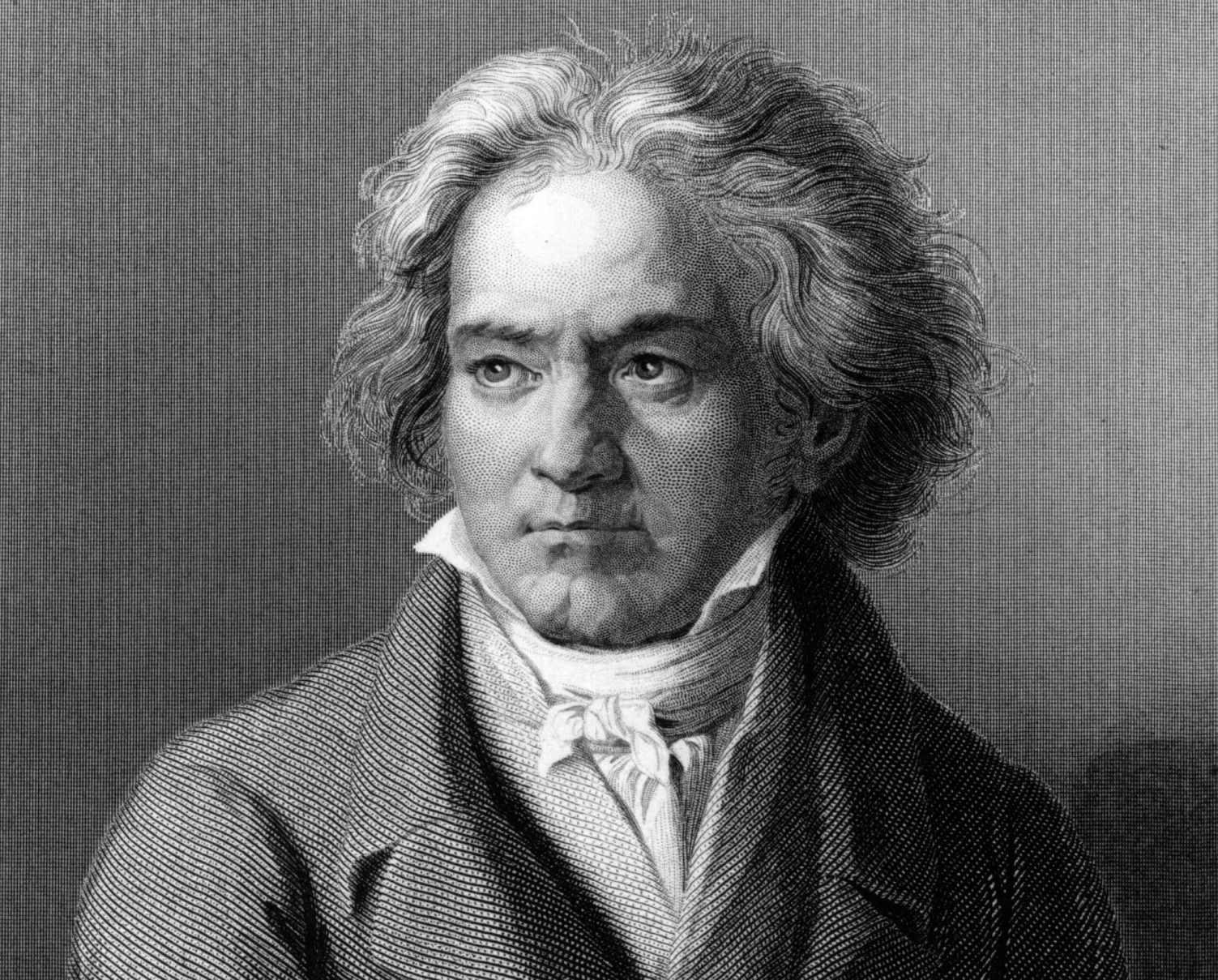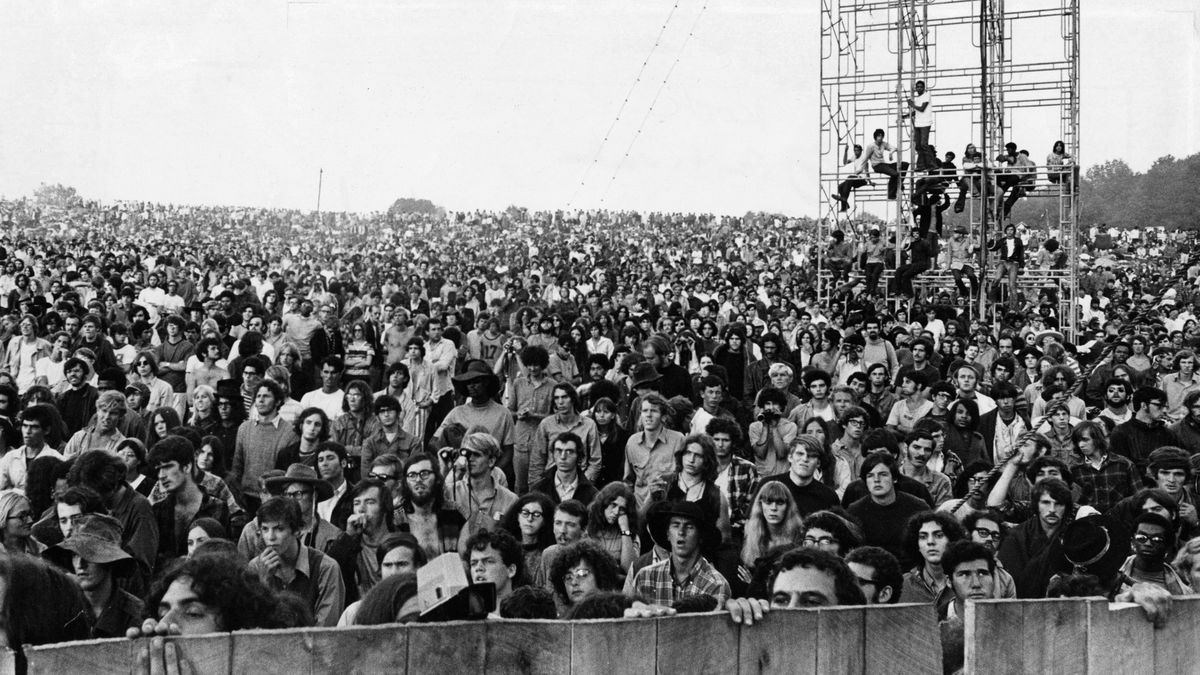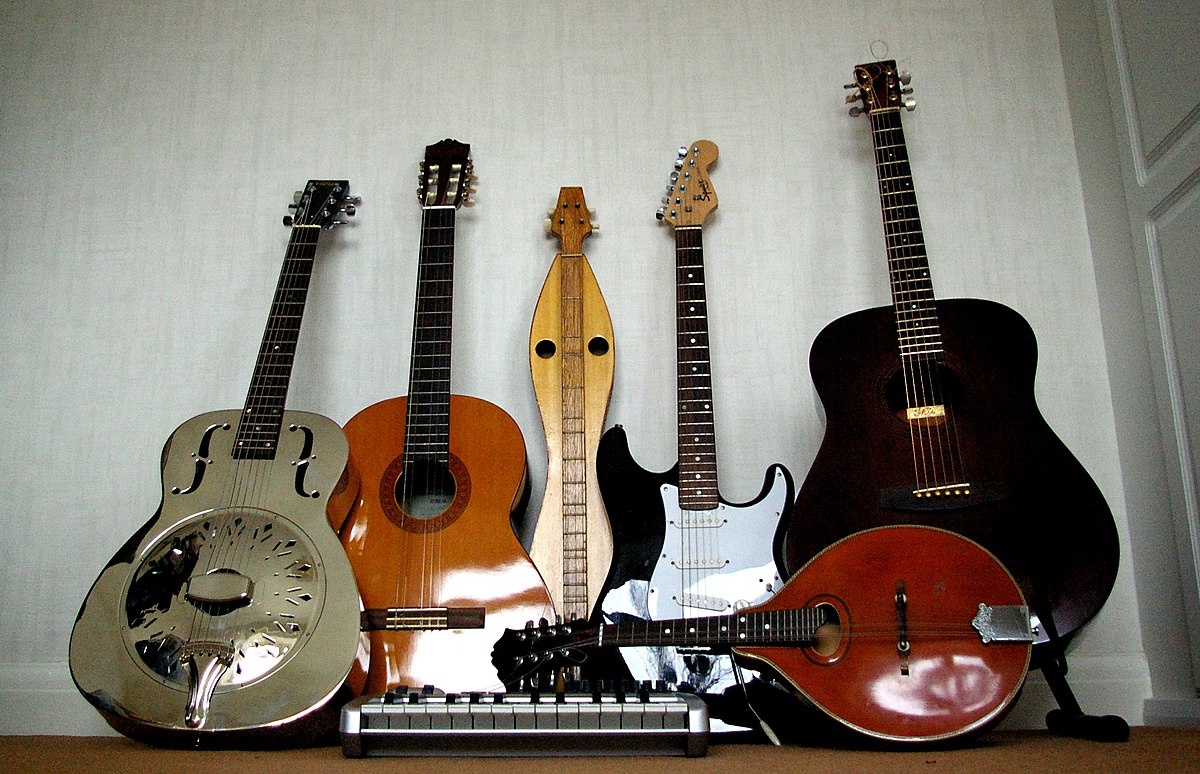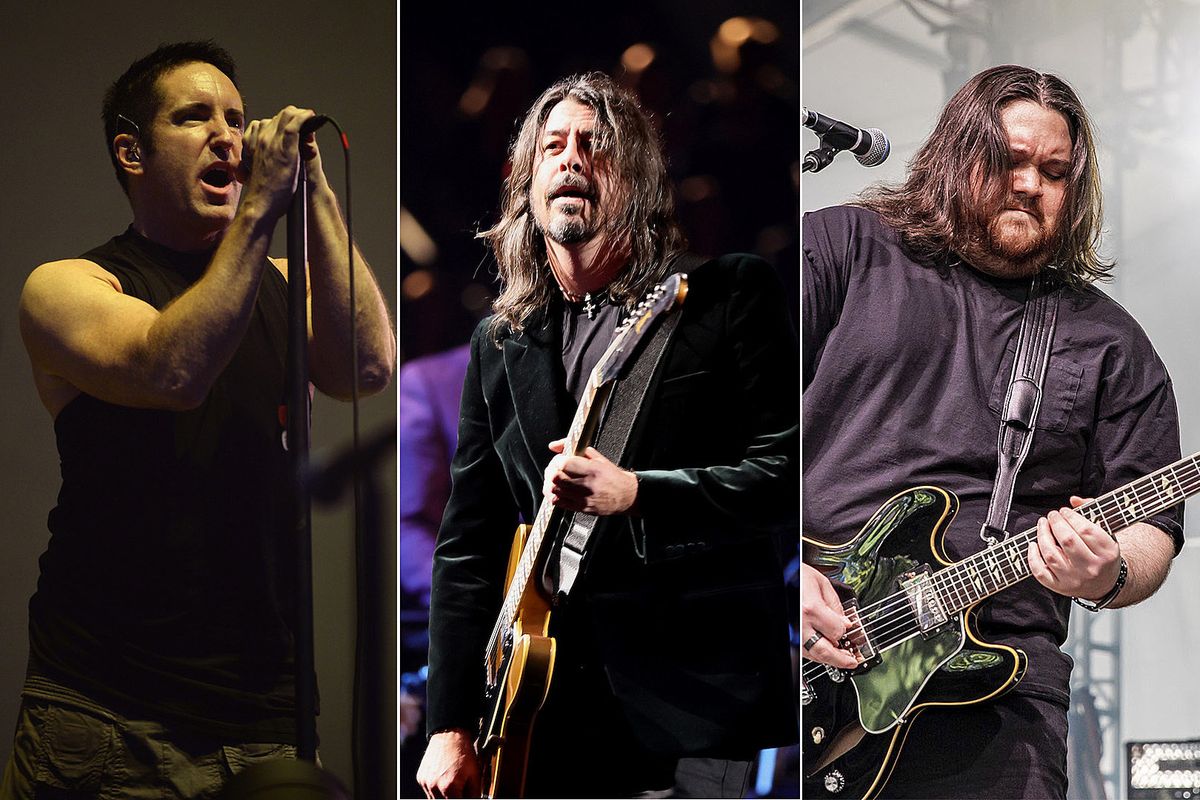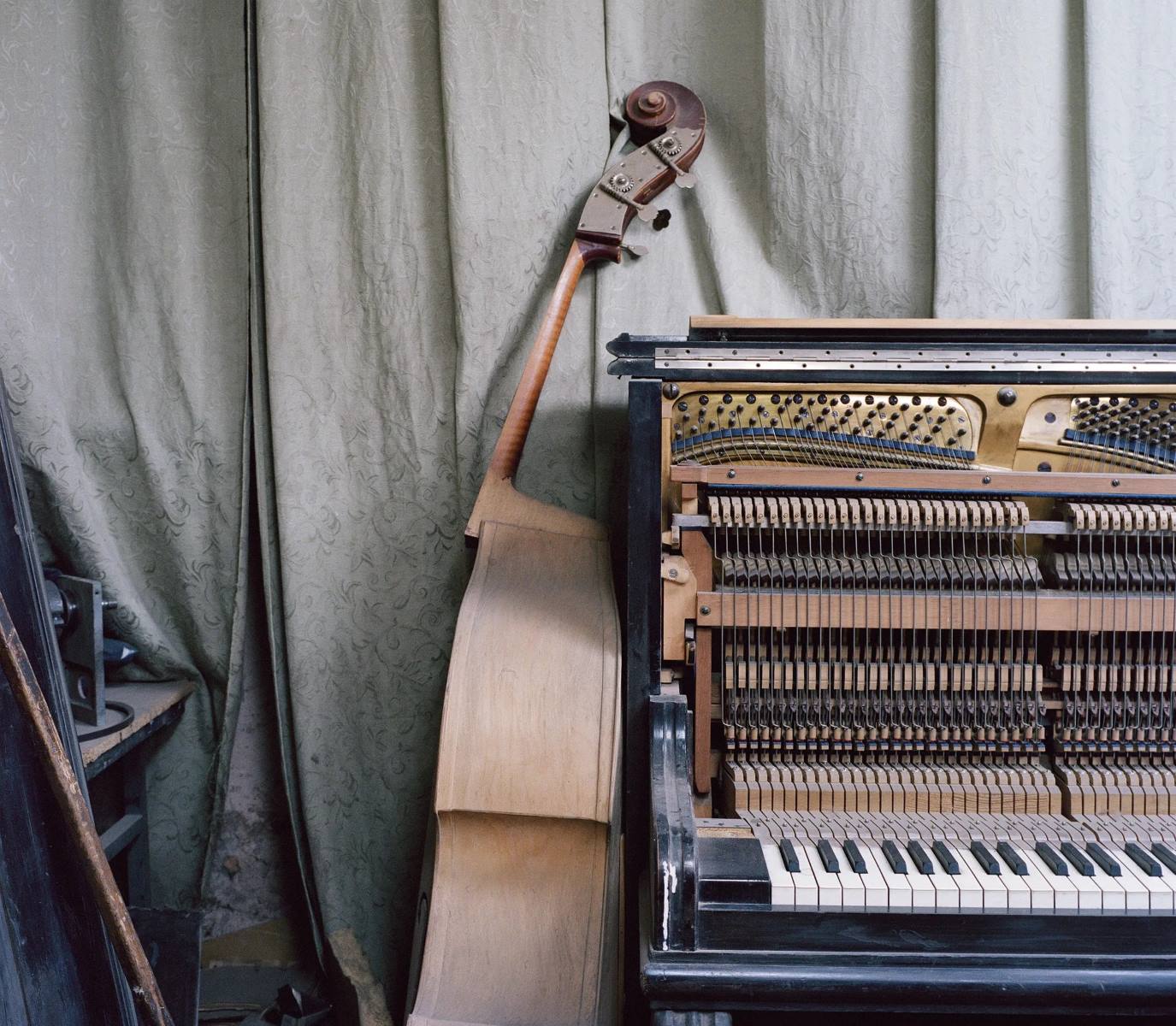Home>Production & Technology>Musician>Who Was The First Rock Musician To Famously Smash Their Instruments On Stage
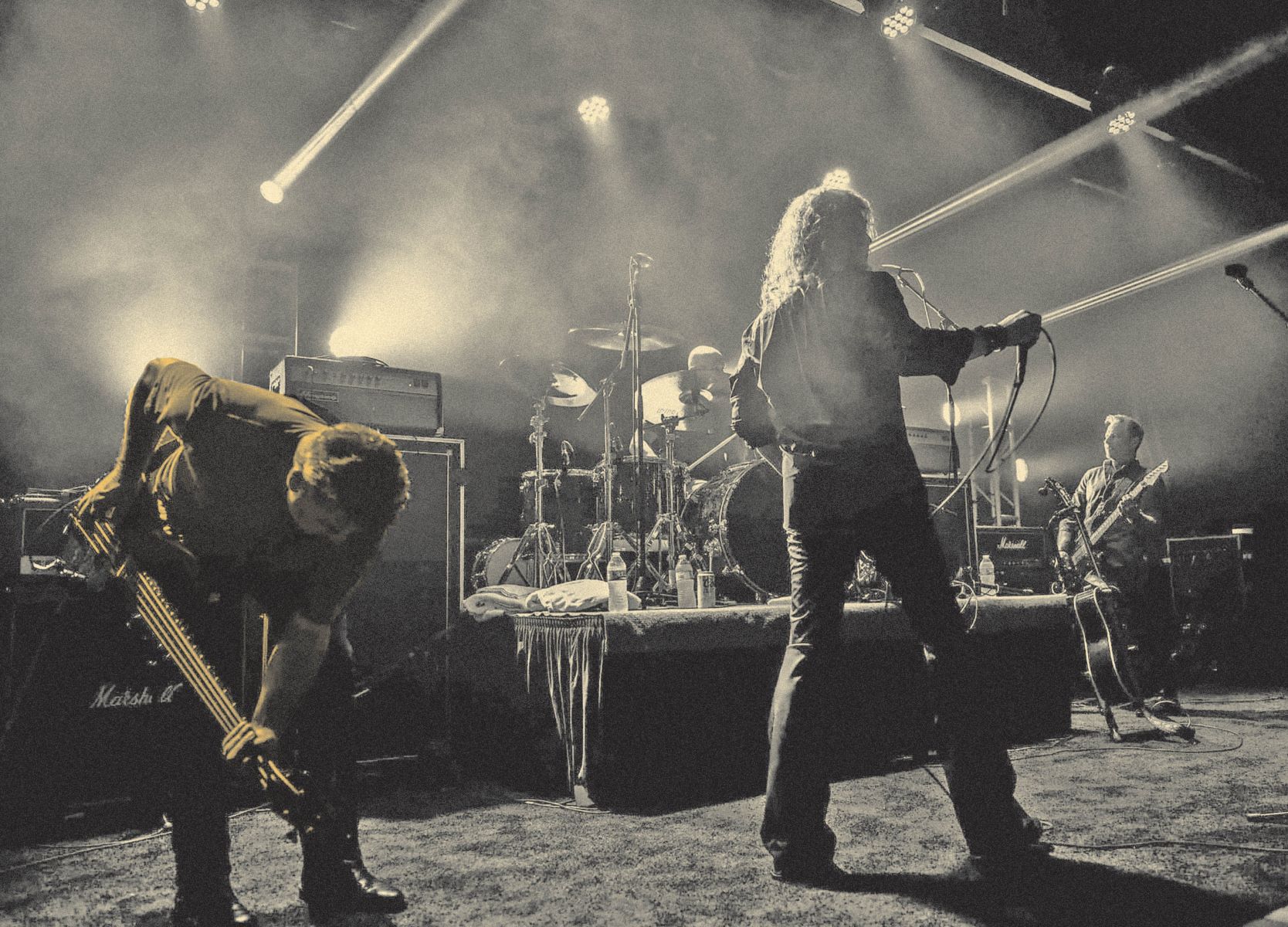

Musician
Who Was The First Rock Musician To Famously Smash Their Instruments On Stage
Published: January 28, 2024
Discover the first musician to famously smash their instruments on stage in rock music history. Explore the rebellious legacy of this iconic musician.
(Many of the links in this article redirect to a specific reviewed product. Your purchase of these products through affiliate links helps to generate commission for AudioLover.com, at no extra cost. Learn more)
Table of Contents
- Introduction
- The Early Days of Rock Music and Performing Styles
- The Birth of Instrument Destruction On Stage
- The Controversy Surrounding Instrument Smashing
- The Impact on Audience and Fan Reception
- The First Rock Musician to Infamously Smash Their Instruments
- The Aftermath and Legacy of Instrument Destruction in Rock Music
- Conclusion
Introduction
Rock music has always been associated with rebellion and a disregard for conventional norms. As the genre evolved, musicians sought ways to captivate audiences and express their raw emotions on stage. One such manifestation of this rebellious spirit was the act of smashing instruments on stage. The act of instrument destruction not only became a form of artistic expression but also a defining symbol of rock music’s wild and untamed nature.
Instrument destruction on stage became a sensation in the 1960s and 1970s as rock musicians pushed the boundaries of performance art. It was seen as a way to channel their frustrations, break away from their musical constraints, and create a memorable spectacle for their fans. However, this controversial act also sparked debates about the value of musical instruments and the inherent wastefulness of destroying them.
Throughout rock music history, there have been countless musicians who have smashed their instruments on stage. Many artists became known for their wild and unpredictable performances, captivating audiences with the shock and intensity of instrument destruction. However, there is one musician who is widely regarded as the progenitor of this rebellious act, forever etching their name in the annals of rock music history.
The Early Days of Rock Music and Performing Styles
The emergence of rock music in the 1950s brought a newfound energy and excitement to the music scene. Artists like Elvis Presley, Chuck Berry, and Little Richard electrified audiences with their fusion of rhythm and blues, country, and gospel music. As the genre gained popularity, musicians started experimenting with their performances, seeking ways to connect with their fans on a deeper level.
During this era, live performances became increasingly dynamic and theatrical. Musicians began to incorporate extravagant stage acts, such as wild dance moves, flashy costumes, and interactive crowd engagement. These performances were designed to create a spectacle and leave a lasting impression on the audience.
As rock music evolved, so did the desire to push boundaries and do something unique on stage. Musicians wanted to stand out from the crowd and create a memorable experience for their fans. This led to the birth of instrument destruction as a form of expression and rebellion.
While instrument destruction became most popular in the 1960s and 1970s, its roots can be traced back to earlier years. In the 1950s, Jerry Lee Lewis, known for his energetic piano playing, was known to kick back his piano bench in a fit of excitement during his performances. This early form of instrument aggression laid the groundwork for what would become a more destructive and iconic act in the years to come.
As the 1960s rolled in, artists such as The Who, The Yardbirds, and The Rolling Stones embraced a more aggressive and edgy performing style. They would intentionally damage their instruments during their live shows, whether through smashing guitars, drum kits, or amplifiers. These acts of destruction created a sense of chaos and rebellion, further fueling the genre’s reputation as a symbol of counterculture.
The Birth of Instrument Destruction On Stage
Instrument destruction on stage emerged as a radical and attention-grabbing form of performance art during the tumultuous 1960s. This era was marked by societal unrest, political upheaval, and a growing disillusionment with the status quo. Rock musicians, often seen as the voice of a generation, embraced this spirit of rebellion and sought innovative ways to express their frustration and discontent.
It was during this time that the act of instrument destruction gained prominence. Musicians began to see their instruments not only as tools of musical expression but also as symbols of conformity and constraint. By destroying their instruments on stage, they were able to release their inner frustrations and break free from the confines of traditional performance norms.
Several factors contributed to the birth of this phenomenon. First and foremost was the desire to differentiate themselves from other artists and create a unique identity. In an increasingly crowded music industry, musicians sought ways to stand out and make a lasting impression. Instrument destruction became a powerful symbol of their individuality and nonconformity.
Furthermore, the turbulent social climate of the 1960s played a significant role in fueling the desire for instrument destruction. As the Vietnam War raged on and civil rights movements took center stage, many musicians embraced a politically-charged stance. Smashing their instruments became a powerful statement against the establishment and the oppressive systems they believed needed dismantling.
Additionally, the increasing popularity of amplified and electric instruments played a part in the rise of instrument destruction. With the advent of high-volume concerts, musicians could amplify their frustrations and desires to shock and awe the audience. Smashing an electric guitar or kicking over a stack of amplifiers became a visually and audibly striking way to register defiance and rebellion.
The early forerunners of instrument destruction on stage were bands like The Who and The Yardbirds. The Who were known for their energetic and explosive performances, with guitarist Pete Townshend famously taking center stage in wreaking havoc on his instruments. Townshend’s violent guitar smashing during performances of “My Generation” became a defining moment in rock history and set the stage for future acts of destruction.
Instrument destruction soon became a hallmark of rock music and a defining characteristic of many artists. It represented a rejection of the status quo, a release of pent-up emotions, and a way to connect with audiences in a visceral and unforgettable way. This form of artistic expression had been born, forever changing the landscape of live performances in rock music.
The Controversy Surrounding Instrument Smashing
While instrument destruction on stage became an emblematic act in rock music, it was not without its fair share of controversy. The destruction of expensive instruments raised questions about the value of these instruments and the wastefulness of destroying them for the sake of performance art.
Traditionalists argued that destroying instruments was disrespectful to the craft of music and the artistry of the instruments themselves. They viewed it as a disregard for the craftsmanship and skill that went into creating these finely-tuned instruments. To them, it was akin to destroying a work of art or burning a rare manuscript.
Moreover, critics saw instrument destruction as a privileged act that only wealthy musicians could afford. Guitars, drums, and other instruments do not come cheap, and destroying them could be seen as an extravagant display of wealth and excess. This was disconcerting to those who believed that music should be accessible to all and viewed the destruction as a form of arrogant indulgence.
On the other hand, proponents of instrument destruction saw it as a powerful form of expression, a cathartic release of emotions, and a way to connect with audiences on a visceral level. They argued that the act itself held symbolic meaning and was an integral part of the artist’s identity and message. To them, the destruction was not wasteful, but rather an artistic statement that transcended the material value of the instruments.
Instrument destruction also sparked a debate about the commercialization of rock music. Some critics contended that the intentional destruction of instruments was nothing more than a gimmick used to generate media attention and boost ticket sales. They saw it as a calculated move to create hype and sensationalize performances, detracting from the authenticity and artistic merit of the music itself.
Despite the controversy, instrument destruction became a signature element of rock music. It added an element of danger, unpredictability, and rebellion to live performances. It became a visually striking moment that left a lasting impression on audiences, and ultimately became an iconic symbol of the genre.
Over time, instrument destruction became less prevalent, partly due to the increasing costs of instruments and the growing recognition of their historical and cultural significance. However, the legacy of this rebellious act continues to influence artists to this day, as they seek new ways to push boundaries and captivate audiences during live performances.
The Impact on Audience and Fan Reception
The act of instrument destruction on stage had a profound impact on both the audience and the reception of fans. It created a sense of exhilaration, shock, and awe, turning a live performance into an unforgettable experience.
For the audience, witnessing the destruction of instruments was a visceral and intense moment. It added an element of danger and unpredictability to the performance, leaving them on the edge of their seats. The sight of a guitarist smashing their instrument or a drummer demolishing their drum kit created a visual spectacle that captivated the audience’s attention and heightened their emotional connection to the music.
The act of instrument destruction also served as a powerful form of catharsis for fans. Rock music has always been an outlet for emotions, and witnessing the destruction of instruments provided an avenue for fans to release their own pent-up frustrations and rebellious energy. Seeing their favorite musicians express their emotions in such a visceral way resonated deeply with fans, creating a shared experience and an electrifying atmosphere during live shows.
Furthermore, instrument destruction became an iconic symbol of rock music’s rebellious spirit. Fans saw it as a defining characteristic of the genre and a representation of the artists’ refusal to conform to societal norms. It solidified the artists’ authenticity and authenticity of the music, garnering respect and admiration from fans who embraced the countercultural aspects of rock music.
However, it’s worth noting that not all fans embraced instrument destruction. Some may have viewed it as a waste or an unnecessary display of aggression. Additionally, the cost associated with destroying valuable instruments may have raised concerns among fans who recognized the financial implications of such destructive acts.
Overall, the impact of instrument destruction on the audience and fan reception cannot be overstated. It created moments of excitement, astonishment, and emotional release, leaving a lasting impression on fans. It became a defining characteristic of rock music performances, solidifying the genre’s reputation for pushing boundaries and captivating audiences in unique and remarkable ways.
The First Rock Musician to Infamously Smash Their Instruments
While instrument destruction became a defining aspect of rock music, there is one musician who is widely regarded as the first to infamously smash their instruments on stage – Pete Townshend of The Who. Townshend’s explosive guitar smashing during live performances of “My Generation” solidified his place in rock music history and set the stage for future acts of instrument destruction.
It was during The Who’s performance at the Railway Hotel in Harrow, London, on September 11, 1964, that Townshend first unleashed the now-iconic act of guitar destruction. Frustrated by technical difficulties and a rebellious desire to differentiate themselves from other bands, Townshend decided to take out his anger on his guitar, smashing it against the amplifiers and stage.
The act stunned the audience, who had never witnessed such an aggressive and defiant act during a live performance. The image of Townshend wielding a broken guitar became synonymous with the raw energy and rebellious spirit of rock music. The act itself became a visual representation of the frustrations and emotions embedded within the music.
Townshend’s guitar smashing quickly became a regular part of The Who’s live performances. It became a trademark of their shows, with Townshend intentionally breaking his guitar and the band’s equipment in dramatic and chaotic fashion. The act was not confined to a single song but became a climactic moment during their sets, leaving the audience in awe and anticipation.
However, it’s worth noting that Townshend’s guitar smashing was not purely for shock value. As the main songwriter for The Who, Townshend used instrument destruction as a form of artistic expression and a way to release his frustrations and inner turmoil. He saw it as a way to connect with the audience on a deeper level and convey the intensity and authenticity of the music.
The impact of Townshend’s instrument destruction was profound and far-reaching. It inspired countless musicians who followed in his footsteps, including the likes of Jimi Hendrix, Eddie Van Halen, and Kurt Cobain. The act propelled The Who into rock music lore, solidifying their reputation as one of the most iconic and influential bands of all time.
Although Townshend’s guitar smashing was met with mixed reactions from critics and fans, it undeniably left an indelible mark on the history of rock music. It became a symbol of rebellion, emotional release, and artistic freedom, illustrating the power of performance art to challenge conventional norms and create a lasting impact.
The Aftermath and Legacy of Instrument Destruction in Rock Music
The act of instrument destruction on stage left a lasting impact on rock music, shaping the genre’s evolution and leaving a powerful legacy. Despite the controversies and debates surrounding the practice, its influence can still be felt in the world of music and performance art today.
Following the rise of instrument destruction in the 1960s and 1970s, the practice gradually became less prevalent. The increasing commercialization of rock music, the rising costs of instruments, and a shift in artistic expression led to a decline in the frequency of destructive acts on stage. However, the legacy of instrument destruction remains embedded in the DNA of rock music.
Instrument destruction became one of the defining characteristics of rock performances, often reserved for climactic moments or encores. It created an element of surprise and excitement for fans, who eagerly anticipated the possibility of witnessing their favorite musicians destroy their instruments. This added an element of danger and unpredictability to live shows, further enhancing the sense of rebellion and rock music’s anti-establishment ethos.
Moreover, instrument destruction influenced the visual aspects of live performances. It encouraged artists to incorporate creative and theatrical elements into their shows, seeking to engage and captivate the audience beyond just the music itself. This led to the emergence of elaborate stage setups, lighting effects, and other visually stunning elements that became synonymous with rock music spectacles.
The legacy of instrument destruction can also be seen in the realm of performance art beyond just music. Artists in other disciplines, such as dance, theater, and visual arts, have drawn inspiration from the rebellious nature of instrument destruction and incorporated similar acts of destruction into their own work. It has served as a powerful metaphor and tool for challenging societal norms, expressing frustration, and evoking emotional responses in different artistic contexts.
Furthermore, the act of instrument destruction has become a symbol of rock music’s authenticity and nonconformity. It represents the genre’s willingness to push boundaries, challenge norms, and explore new avenues of expression. Even in the absence of physical instrument destruction, artists continue to embrace the spirit of rebellion and artistic freedom that instrument destruction embodies.
While instrument destruction has evolved and transformed over the years, its impact on rock music is undeniable. It remains a powerful and unforgettable aspect of live performances, forever etching itself in the memories of fans and shaping the perception of rock music as a whole. As the genre continues to evolve, there will always be a nod to the legacy of instrument destruction, reminding us of its rebellious and transformative influence.
Conclusion
Instrument destruction on stage has left an indelible mark on the landscape of rock music. From its inception in the 1960s to its enduring legacy today, this rebellious act has captivated audiences, sparked controversy, and become a defining characteristic of the genre. While the act itself may have faded in popularity over the years, its impact on the realm of performance art and the emotional connection with fans remains significant.
The early days of rock music and the desire for uniqueness and spectacle paved the way for instrument destruction to emerge as a form of artistic expression. It allowed musicians to break free from musical constraints, connect with audiences on a visceral level, and create a lasting impression. Pete Townshend of The Who is widely regarded as the pioneer of this act, forever etching his name in history as the first rock musician to famously smash their instruments on stage.
Drawn in by the allure of rebellion, fans embraced instrument destruction as a powerful symbol of rock music’s countercultural spirit. The act became a cathartic release, a visually striking spectacle, and an embodiment of the genre’s authenticity. While controversial, the destruction of instruments became an iconic element of rock performances, forever changing the way fans experienced live shows.
Despite the debates surrounding the practice, instrument destruction has left a lasting legacy in rock music. It pushed boundaries, inspired future generations of musicians, and influenced the visual and performative aspects of live performances. Even as the act itself became less prevalent, its influence can still be felt in the world of music and performance art, where artists continue to challenge conventions and connect with audiences through acts of artistic rebellion.
In conclusion, instrument destruction on stage has played a pivotal role in the evolution of rock music. It represents the genre’s defiance of norms, its willingness to push boundaries, and its power to captivate and connect with audiences. While the physical act may have diminished, its impact and legacy endure, reminding us of the rebellious and transformative nature of rock music as an art form.


